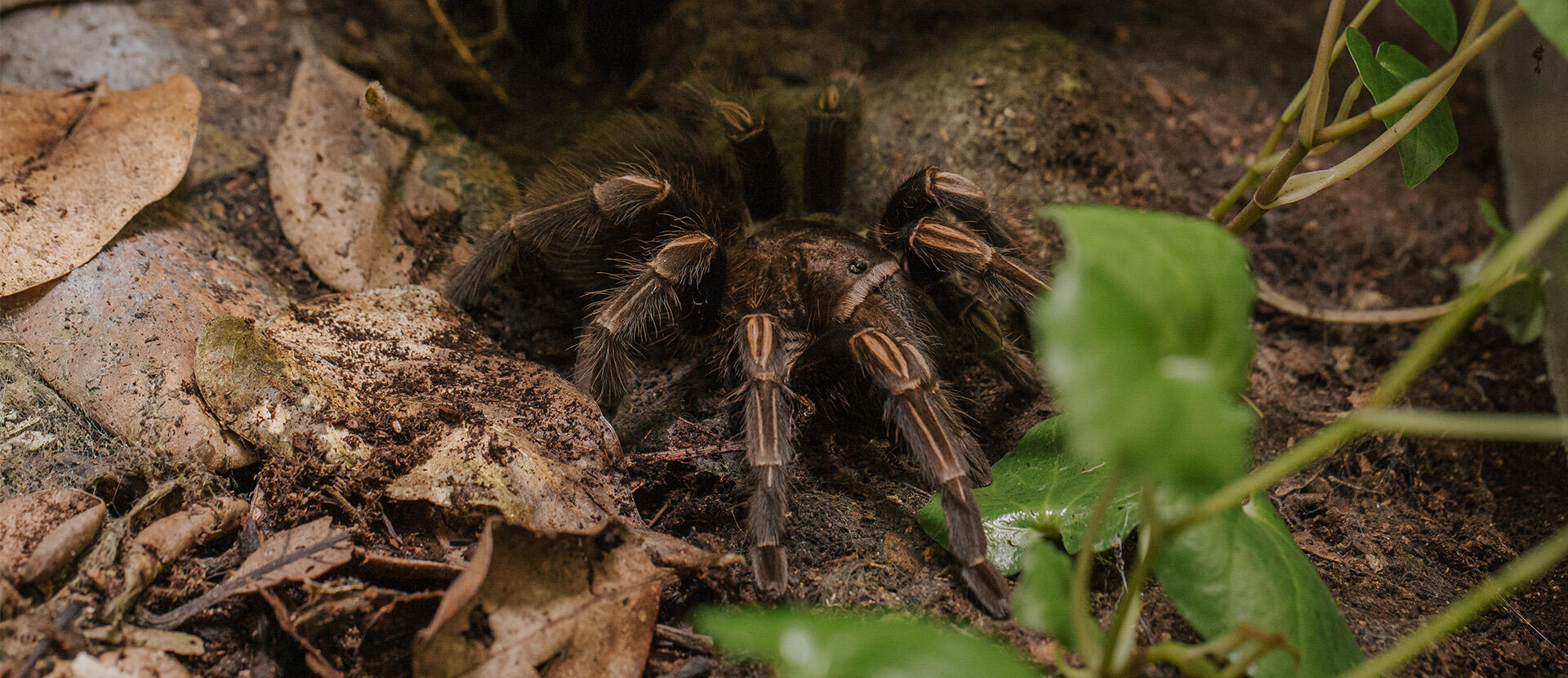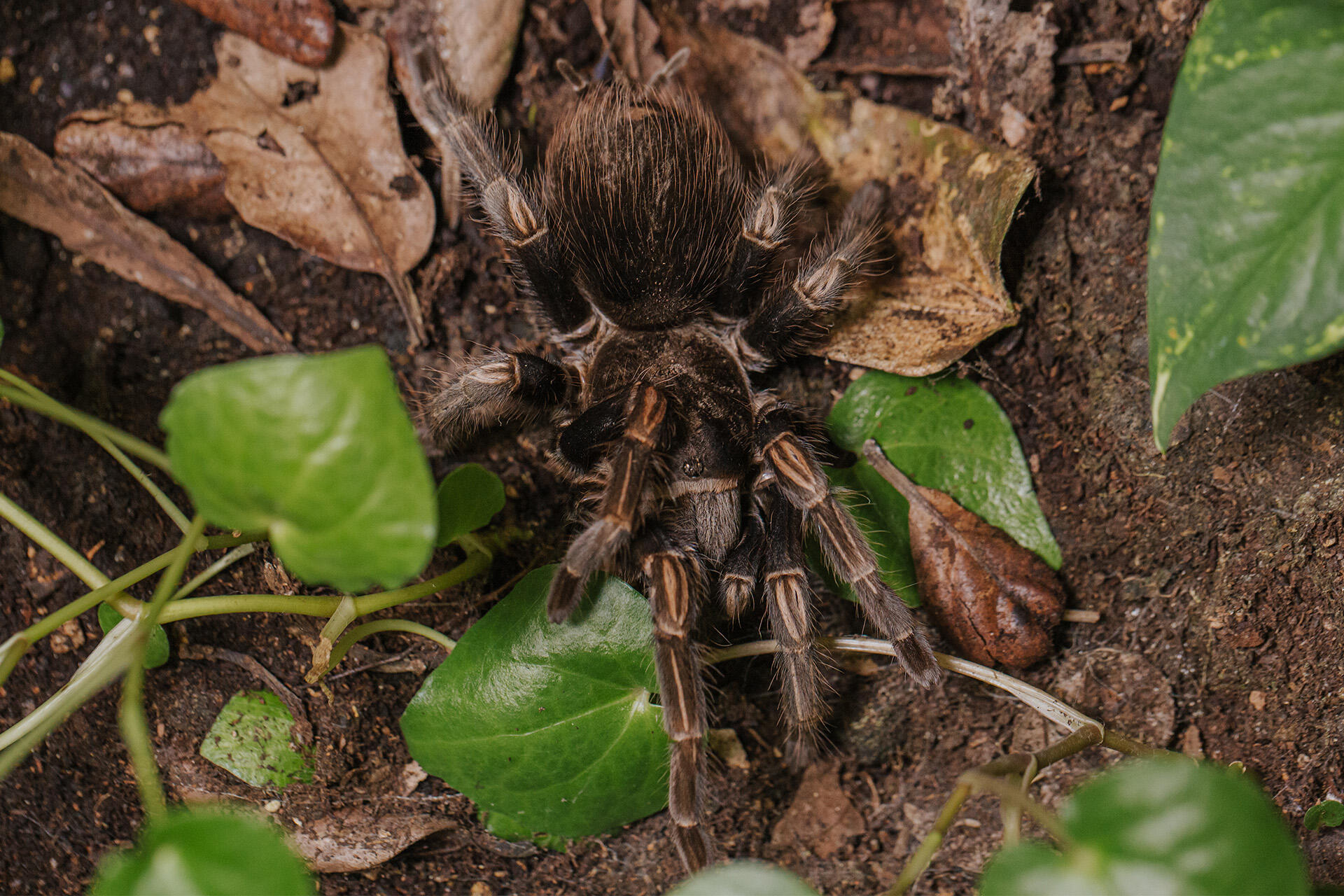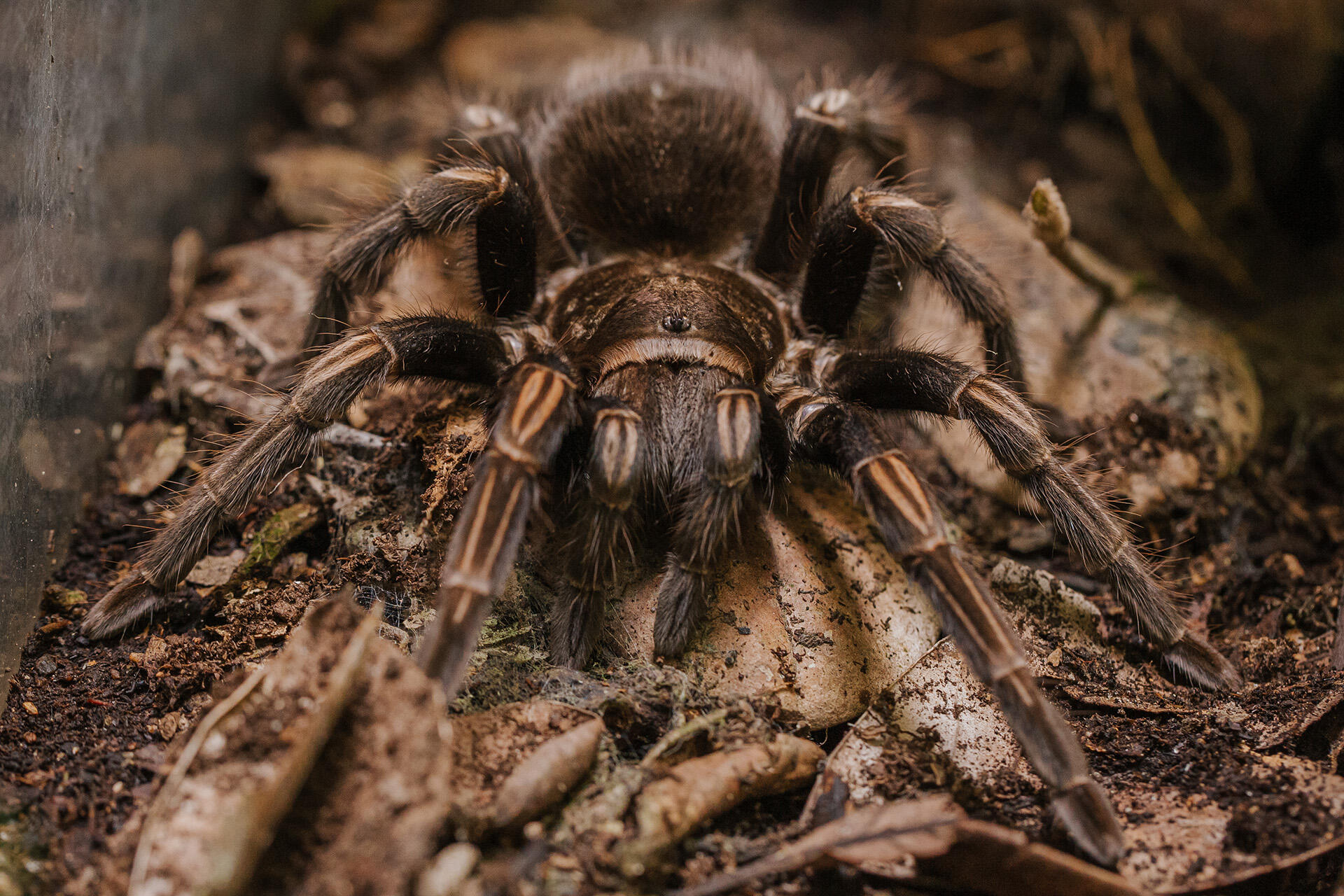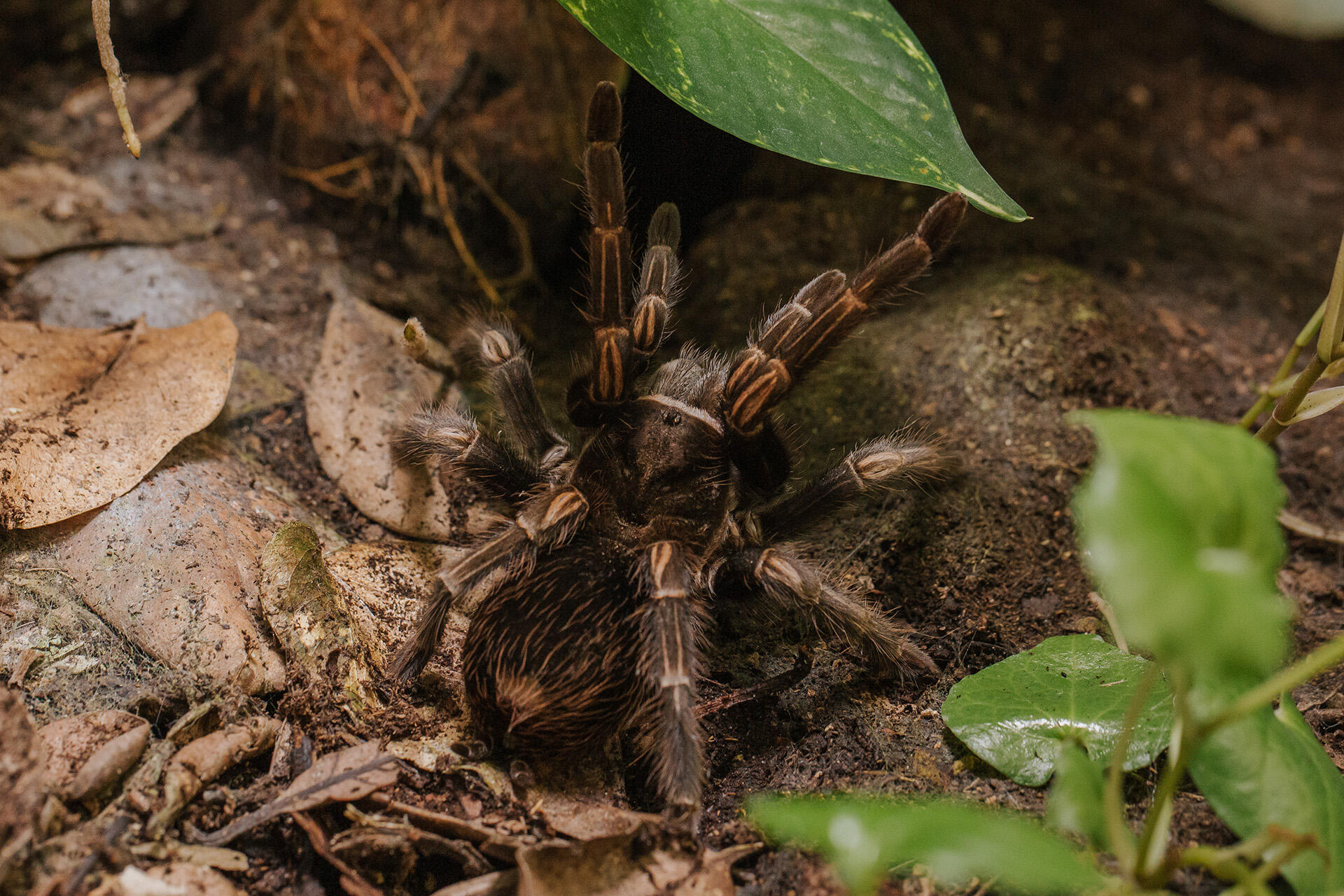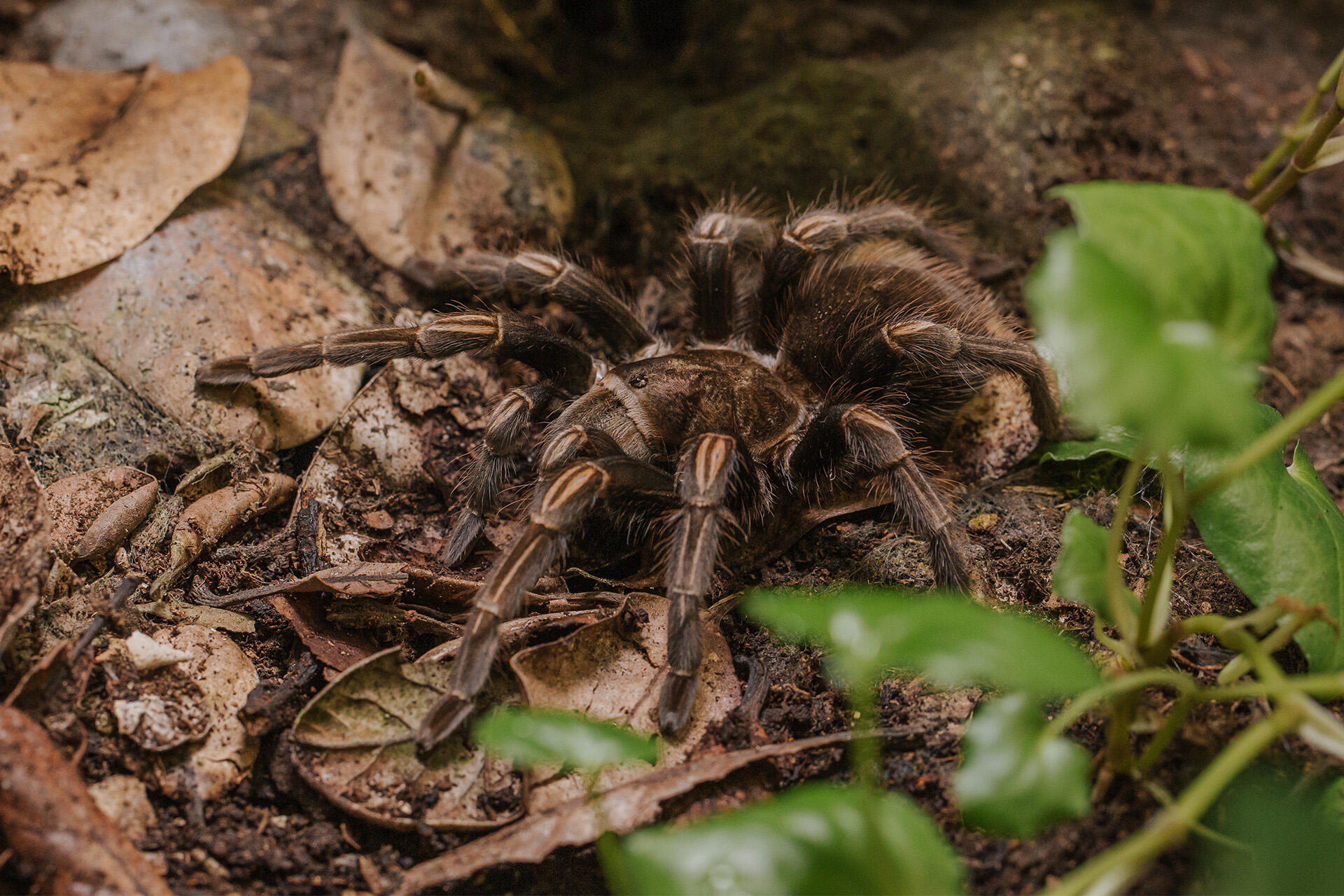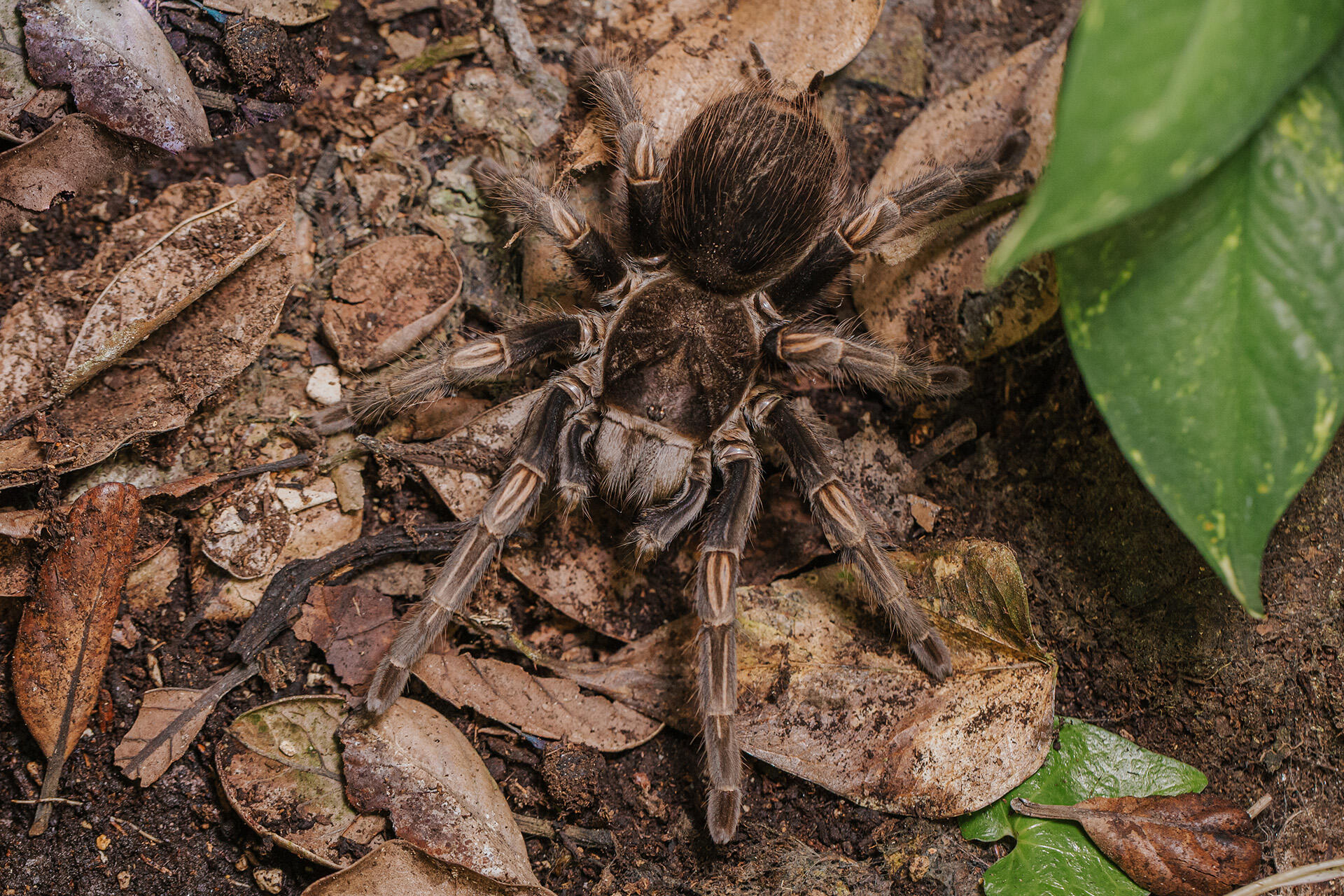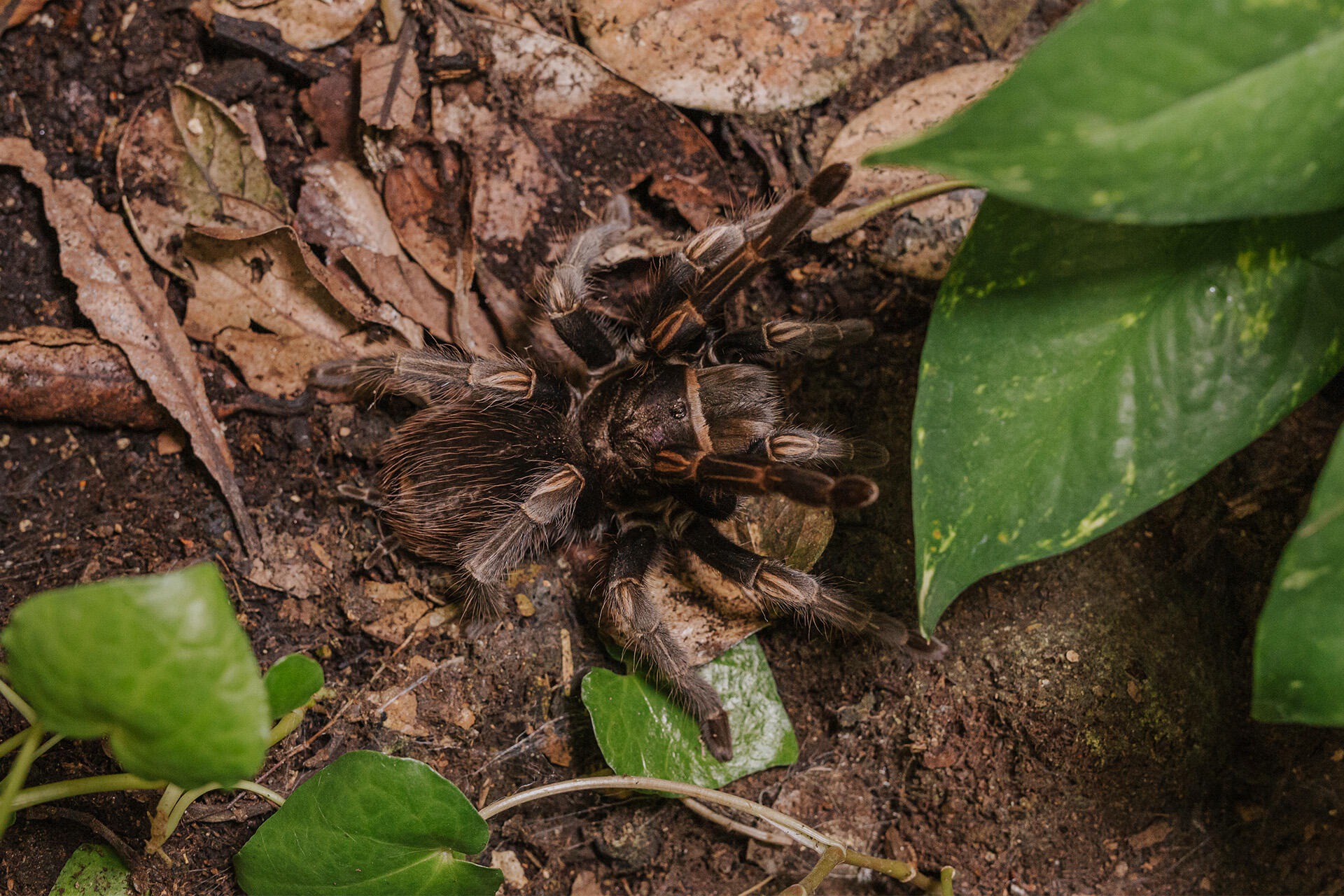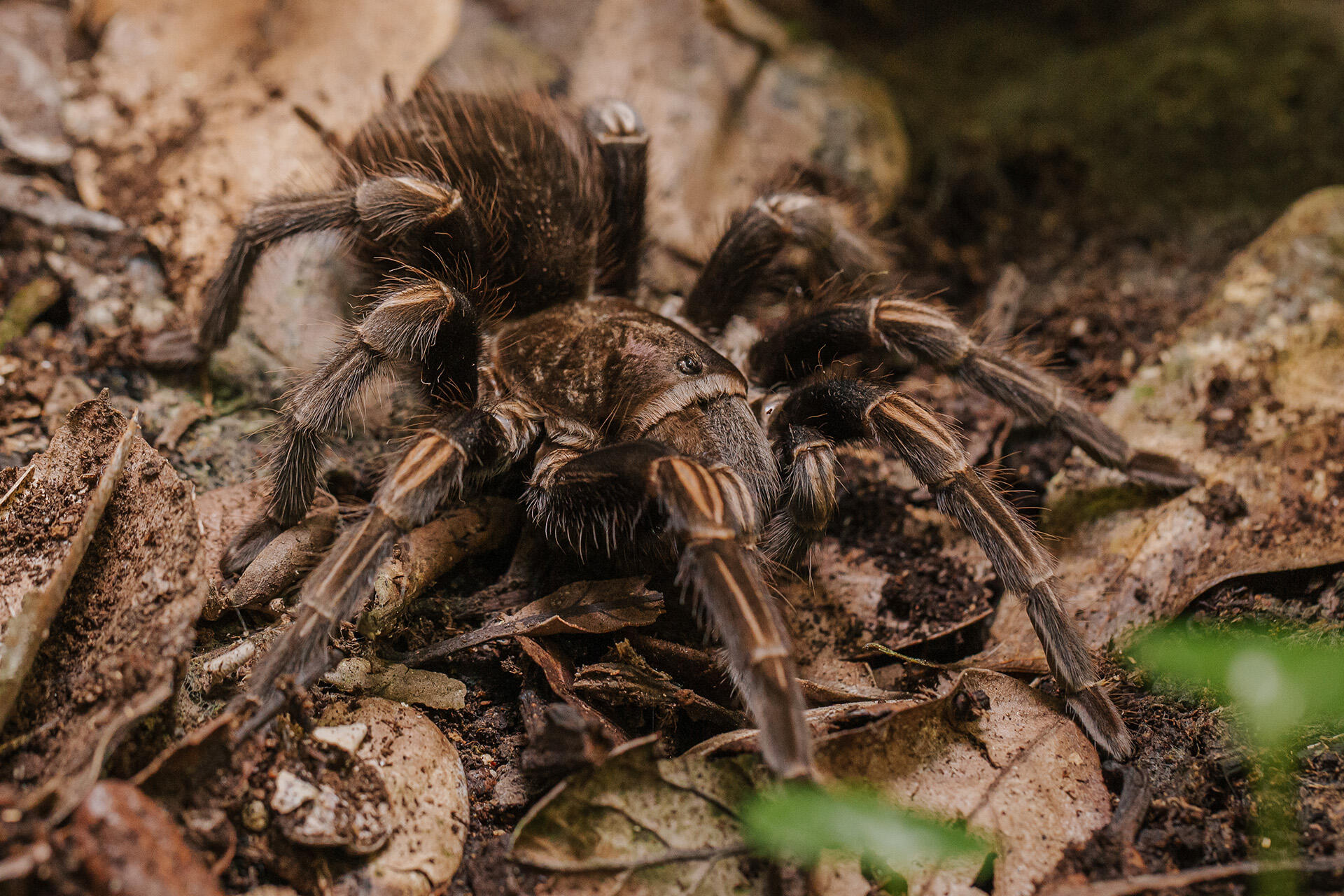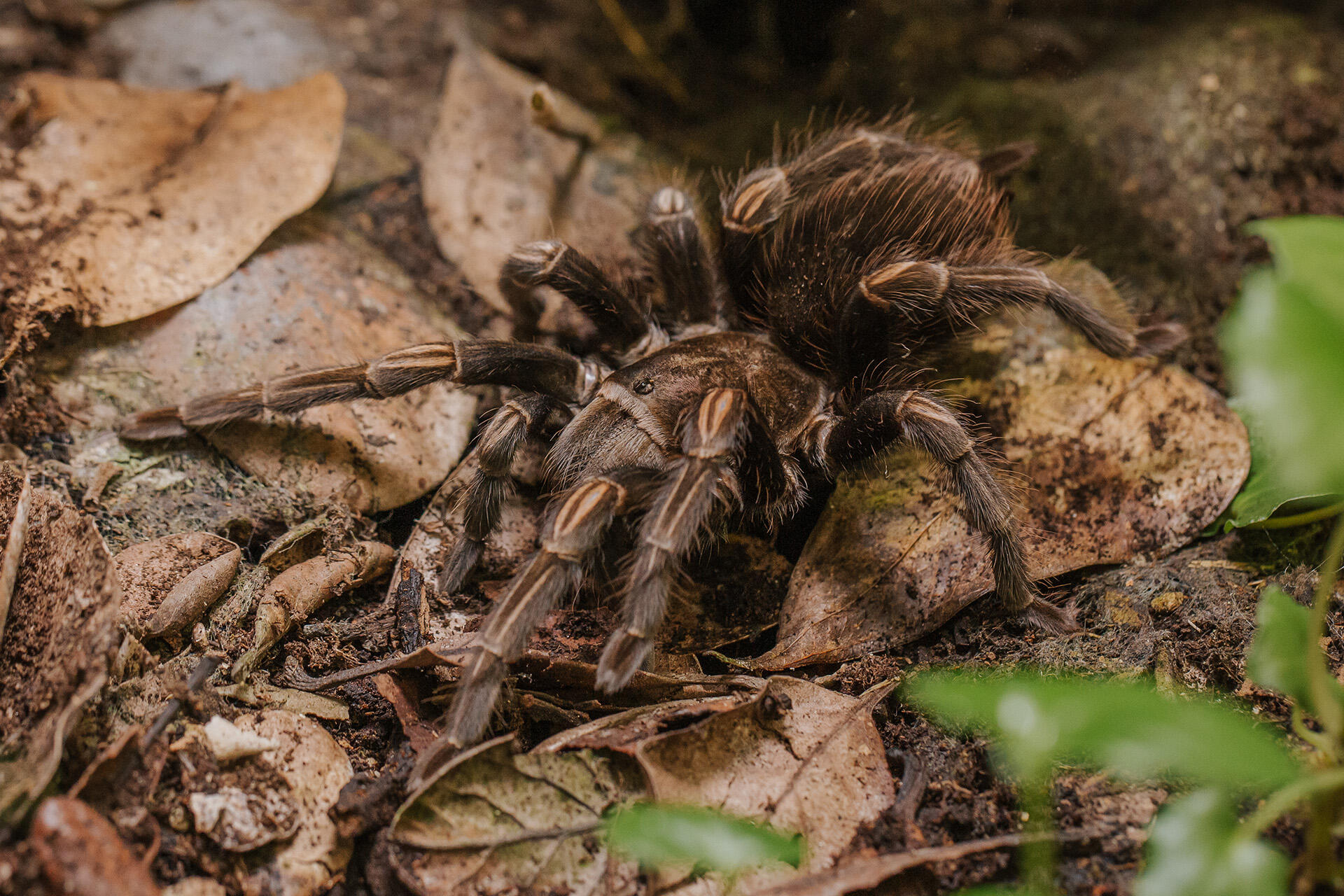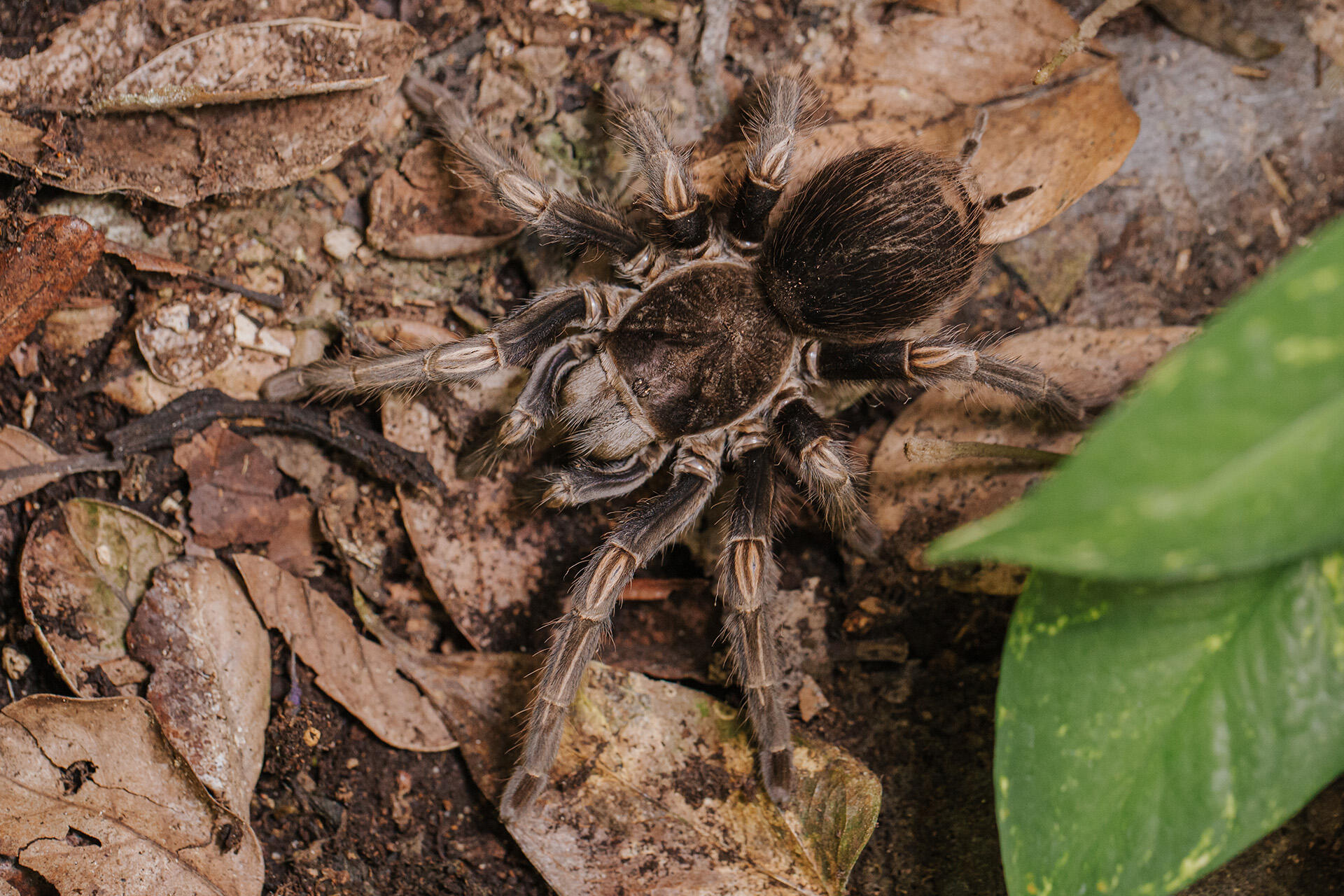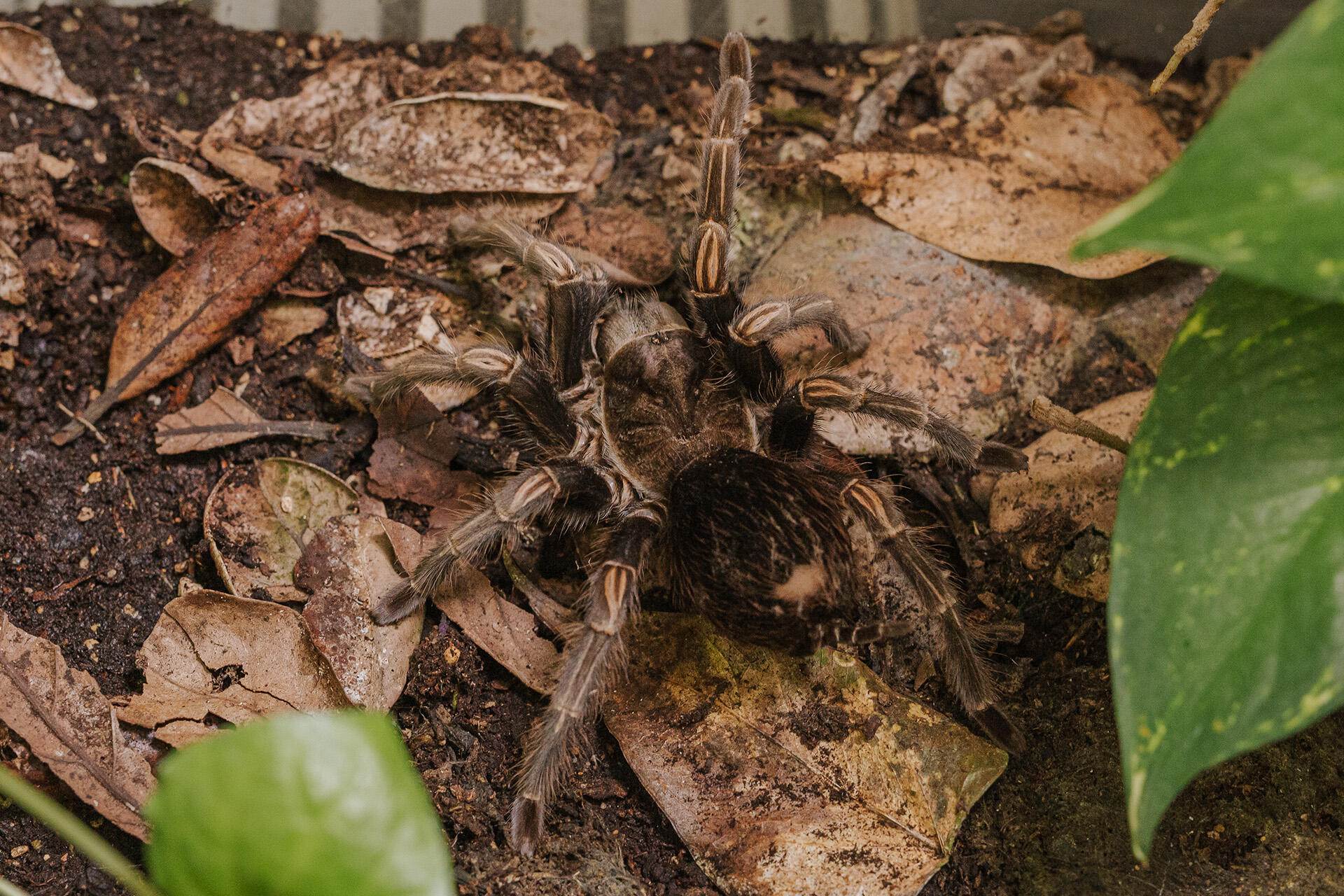Long legs, long life
The Andean stripe knee tarantula can live for up to 15 years, but females live a lot longer than males. The male tarantula will only live for around 18 months after his final moult. However, he also cannot mate until after the final moult has taken place. That doesn’t give him much time to be a dad!
Home sweet… burrow?
Where do tarantulas like to live? Most tarantula species tend to burrow in the ground or find a crevice to live in. These burrows are safe spaces that help tarantulas to regulate their body temperature. Near the opening of the burrow, the air is dry and warm, whereas deeper inside the burrow is more humid and cool. It’s also a great place to moult their exoskeletons – which typically happens once a year.


